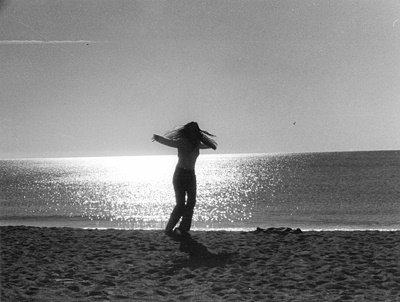All Nonfiction
- Bullying
- Books
- Academic
- Author Interviews
- Celebrity interviews
- College Articles
- College Essays
- Educator of the Year
- Heroes
- Interviews
- Memoir
- Personal Experience
- Sports
- Travel & Culture
All Opinions
- Bullying
- Current Events / Politics
- Discrimination
- Drugs / Alcohol / Smoking
- Entertainment / Celebrities
- Environment
- Love / Relationships
- Movies / Music / TV
- Pop Culture / Trends
- School / College
- Social Issues / Civics
- Spirituality / Religion
- Sports / Hobbies
All Hot Topics
- Bullying
- Community Service
- Environment
- Health
- Letters to the Editor
- Pride & Prejudice
- What Matters
- Back
Summer Guide
- Program Links
- Program Reviews
- Back
College Guide
- College Links
- College Reviews
- College Essays
- College Articles
- Back
Dancing in the Air MAG
On a chilly evening in mid-November I stride down the sidewalk. As I crunch through a carpet of fallen leaves, I feel strong, confident, and energized, despite the complaining of my muscles. I'll be feeling tonight's class in the morning – I'm feeling it already – but I don't mind.
As I slide into my car, I take inventory. My abs hurt (after the floor work, no surprise there). My arms ache (with all the pull-ups I did, also not a surprise). Bruises already dot my knees and inner thighs. The top of my right foot stings, but it's nothing major; I've seen worse cases of pole burn. All in all, a typical catalog of hurts. And these aren't just because I'm a newbie, either. Most people involved in my sport come home with little injuries like this after every practice. This is my sport. This is pole dancing.
Most people immediately think “stripping” when they hear “pole dancing,” but this isn't necessarily correct. While exotic dancers may use a pole, it generally serves as a prop that they hold on to and walk around while doing their routine. The sport of pole dancing, however, requires tremendous upper body, leg, and abdominal strength as well as flexibility to accomplish gymnastic-style tricks and moves. As a sport, pole dancing has evolved rapidly in recent years, becoming a fitness trend as well as a new niche for competition – for both women and men. However, some stigma still remains, and many dancers are reluctant to admit their passion for the sport.
Mimi, a self-taught dancer who has been involved with pole since 2011, owns the studio where I train. “I just fell into it,” she says. “I love the flexibility and strength it requires, and what it does to my body, my personality, and my self-esteem.” Mimi became an instructor because “I love encouraging women,” she says, going on to explain how pole dancing brings out her inner beauty, and she wants other women to feel the same way. She loves seeing her students improve and reach for their goals, explaining, “You can't be weak in pole, either physically or emotionally.”
Pole dancing evolved from a combination of worldwide forms of dance, according to the International Pole Dancing Fitness Association. These include Chinese pole and Indian mallakhamb, a form of pole used to train wrestlers.
Poles used in dancing are made of steel or brass and can be either stationary or spinning. Some poles are made of fiberglass and have LED lights in them for dramatic effect; however, plastic poles aren't ideal, since they tend to bend and give dancers nasty friction burns. Anyone who's spent time in a pole studio also knows that lotions or oils are strictly forbidden. They make the pole slick and difficult to grip, which can prove dangerous to someone attempting a trick off the ground. And while some may complain about how skimpy pole costumes can be, this actually serves a functional purpose: skin contact with the pole provides friction that you can't get wearing leggings or long sleeves.
Many pole dancing competitions exist around the world, sponsored by pole associations such as the U.S. Pole Dance Federation and the International Pole Dance Fitness Association, which has been very vocal in lobbying to get pole dancing included in the Olympic Games.
The pole dance community is inclusive, supportive, and welcoming. You can work at your own pace; teachers and students will applaud when you learn a new trick, and everyone is more than willing to give tips or advice. It doesn't matter if you feel out of shape or not strong enough or shy about your body. There's no judgment. And since pole is a female-dominated sport, it's easy for women to feel welcome and comfortable doing it. Men rarely venture inside my pole studio.
No matter how crappy my day is, something about my pole studio always brightens my mood. When I step through the doors, I leave my stresses and worries behind. And when I nail a new move, I'm on top of the world for the rest of the day. Pole dancing has helped me both emotionally and physically, and I haven't even been doing it for very long. I am absolutely addicted to this sport.

Similar Articles
JOIN THE DISCUSSION
This article has 0 comments.
